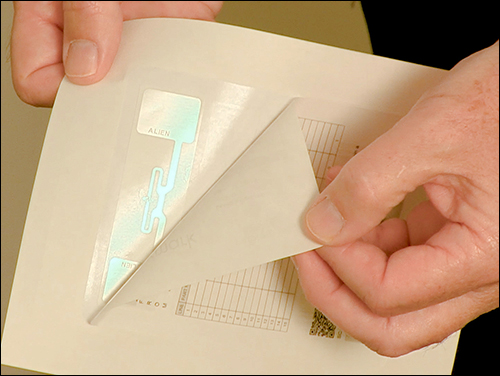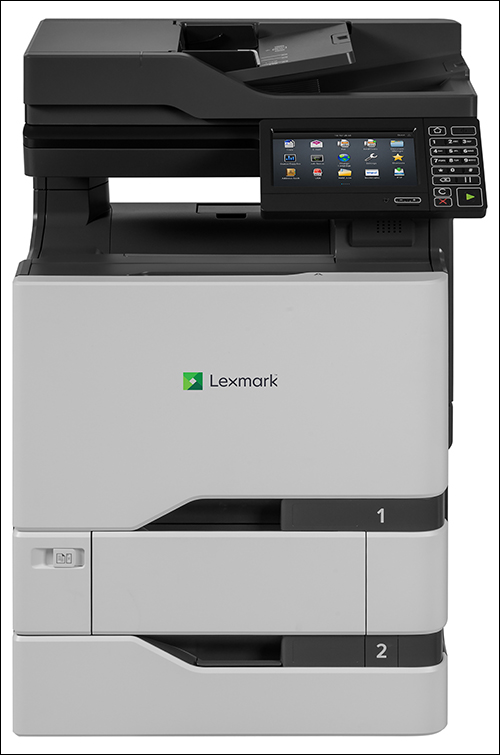Dec 25, 2017Global printing solutions company Lexmark International has released two models of UHF RFID-enabled color laser printers designed to enable customers to quickly encode and print RFID labels. The system addresses a growing need for affordable and convenient RFID label printing, says John Linton, Lexmark's retail and manufacturing industry director, which its customers have sought in recent years. The company not only sells its CS725R and CX725R color RFID printers, but also, upon request, partners with companies to provide solutions for end-to-end RFID systems.
Lexmark, headquartered in Lexington, Ky., manufactures laser printers and imaging products that are sold to customers worldwide. The company had previously offered a monochrome RFID-enabled laser printer with a built-in ThingMagic M5e reader (see Mojix Wins First-Ever 'Best in Show' Award at RFID Journal LIVE! 2008), but discontinued that model several years ago. However, Linton says, the use of RFID has become increasingly of interest to its customers in the past year or two, and those customers have begun asking about RFID label-printing options. "The demand has been really hot for these products," he states.
According to Linton, manufacturing companies are seeking RFID technology for monitoring work-in-progress (WIP); logistics companies are tracking inventory boxes, pallets and other items, as well as yard management; and some offices are utilizing RFID labels to track assets or documents. "Every customer is at least thinking about RFID on an enterprise level," he says. In addition, Lexmark has implemented its own RFID system to track its WIP for custom printer manufacturing, and uses the new color laser RFID printers to print labels for that purpose.
Businesses already using RFID often choose Lexmark printers for price labels, invoices or other documentation, Linton explains, and another printer for producing RFID tags. With the new color laser printers, the RFID functionality can be built into an existing document or label.
In the case of WIP, for instance, some Lexmark customers are applying RFID labels to parts or products being assembled, in order to track the manufacturing process and shipping, according to custom orders. Lexmark uses the tags attached to its own printers, as well as to the trays provided with those printers, in order to fulfill custom orders. Staff members can use a label's unique ID number, paired with the order details in the software, to help them confirm that the proper custom-made product is being provided to the correct customer.
In addition, logistics companies are printing tags and using them to monitor yard management. For instance, the tags are being utilized to identify trailers or containers within a yard via a mobile RFID reader.
One of the greatest drivers for RFID growth among Lexmark's customers, Linton says, may be the trend toward retail and apparel tagging. Since retailers and brands are increasingly using the technology, manufacturers and logistics providers are finding an advantage in applying tags themselves and using them internally. "All our data is showing that RFID is going through the roof," he states. "The early excitement we've seen has been pretty amazing."
The RFID color laser printer provides an alternative to a traditional thermal RFID tag printer, Linton explains, since it employs laser printing on media up to 8.5 inches by 14 inches and can accommodate color tasks. The CS725R and CX725R each can encode an RFID tag built into a label, while laser-printing that same label.

The printers are designed to be easy to use, Linton notes, without the need for any additional training. The CS725R is a printer-only model, while the CX725R is a multifunction print, copy, fax and scan device. Both include an eTask touchscreen, though that screen is another key differentiator between the two printers, as the CS725R has a 4.3-inch screen, while the CX725 comes with a screen measuring 7 inches. The latter printer also has a higher maximum memory (4098 megabytes, as compared to the CS725R's 3072 megabytes).
With optional paper drawers, each printer model has an input capacity of about 500 sheets of RFID media, depending on the thickness of paper and tags used. Additionally, capacity is provided as standard for up to 650 sheets of non-RFID paper through two additional trays. Labels or other media can measure from 4.1 inches by 5.8 inches in a tray to 8 inches by 14 inches. The CX725R enables scanning at speeds of up to 60 pages per minute, and copying at up to 50 copies per minute. The printers all come with a "Forms" SIM card that can be used to provide settings for printing and encoding projects across multiple printers.
Integration and installation can be provided by Lexmark's RFID integration partners, Linton says. However, the company's customers typically have some kind of RFID initiative when they approach Lexmark, and support their own integration process.
The manufacturer's suggested retail price for the CS725R is about $4,500, while the CX725 costs approximately $5,700. That's affordable enough, Linton suggests, that some customers opt to purchase the tag for traditional printing, with plans to adopt RFID programs in the future, to be encoded with the same devices.



